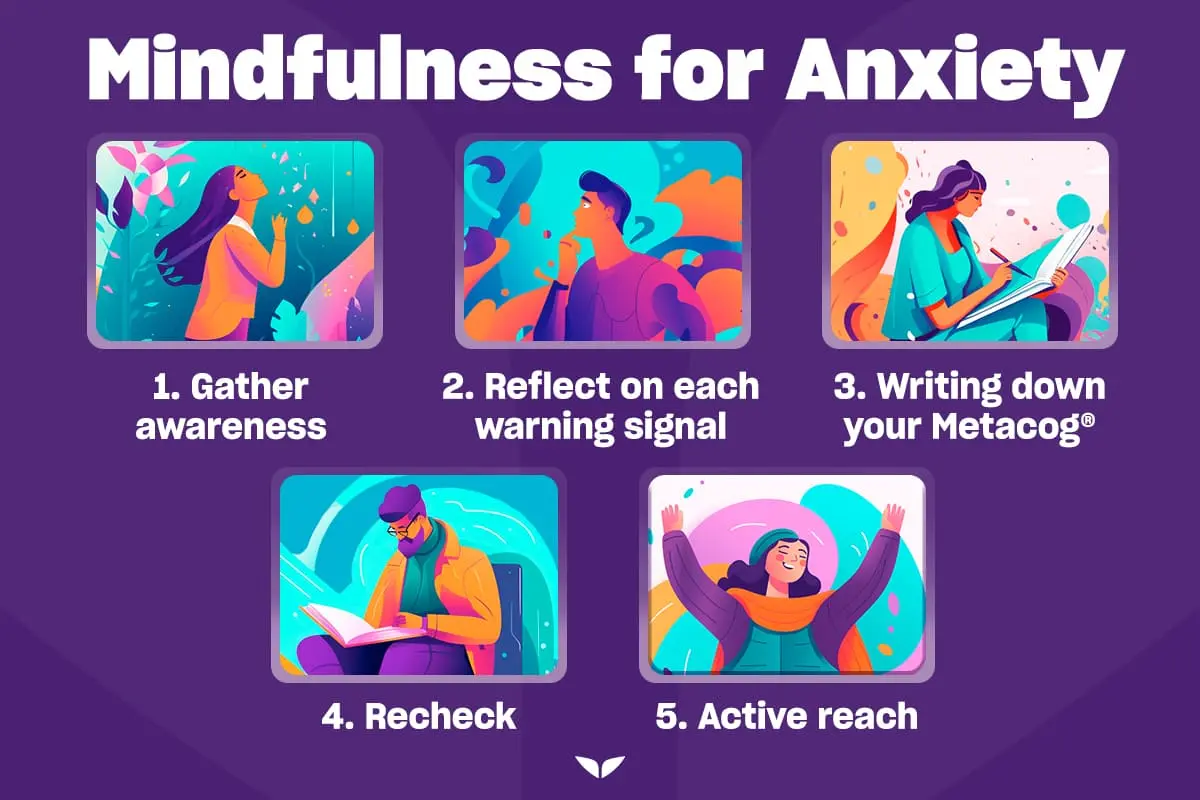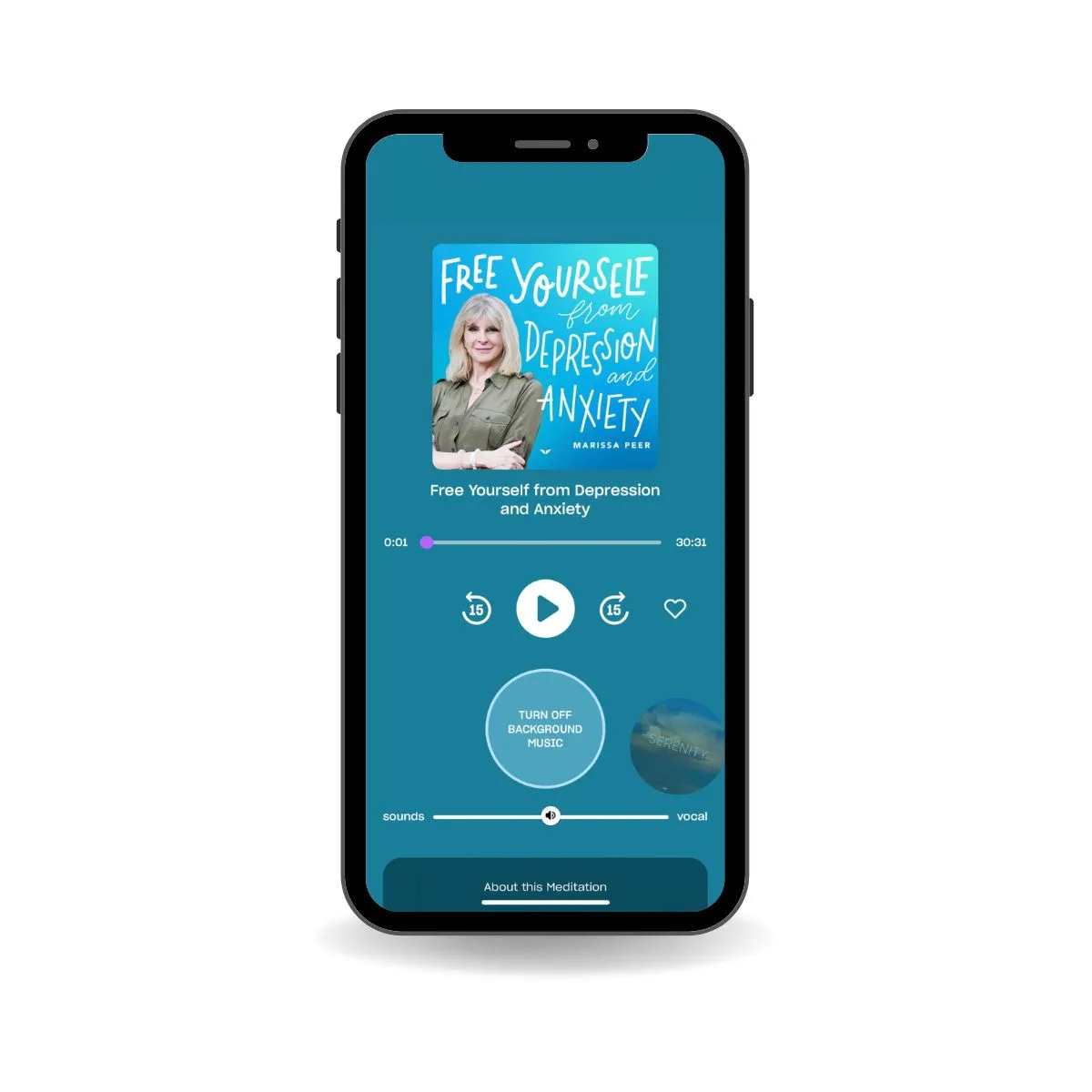Feeling stressed out, irritable, and in a never-ending state of alertness is no fun ride for anyone, especially when it seems like it’s going on forever. It’s a rampant problem in our society, where stress is as common as the air we breathe.
However, there’s a simple solution you may want to consider: mindfulness for anxiety practices. No, it’s not another hippie concept taken out of a yoga class. As a matter of fact, there’s science that backs up the power of it.
With the guidance of Dr. Caroline Leaf, a cognitive neuroscientist who’s also the trainer of Mindvalley’s Calm Mind: A Scientific Method for Managing Anxiety and Depression Quest, you’ll be assured to receive expert insights on easing your anxiety.
As she explains, “What your mind creates, only your mind can take away.”
How does mindfulness help with anxiety?
When you experience anxiety, it’s often because your brain perceives a threat or danger, whether it’s real or just imagined. This triggers the “flight or flight” response, which will automatically flood your body with stress hormones like cortisol and adrenaline.
To counteract the response, it helps to practice mindfulness techniques for anxiety. They can help regulate your body’s stress response by activating the parasympathetic nervous system, responsible for the “rest and digest” state of healing.
And it’s in this state that your body can tap into its natural capacity to heal emotional and physical issues.
Science agrees with mindfulness, too. In fact, here are a few studies proving its effectiveness:
- A 2010 review of 47 studies showed that mindfulness-based interventions were successful in reducing symptoms of anxiety and depression.
- This 2016 study showed that mindfulness reduces the level of cortisol released in the body, because of stress and anxiety.
- A 2015 research study found that mindfulness-based stress reduction therapy improved immune function in breast cancer survivors.
You can think of it like this: if anxiety is a fire alarm going off in your brain, mindfulness is the fire extinguisher that can help put it out. It doesn’t mean that the alarm won’t ever go off again, but it can help you manage the situation more calmly and effectively.
How to practice mindfulness for anxiety
Now you may wonder, “How do I use mindfulness for anxiety?” And the expected practical answer is here.
Firstly, you may want to set a time and space for your practice. It’s important to know that it doesn’t have to take up a lot of your day; research shows that even 10 minutes of mindfulness practice can significantly reduce anxiety.
Then, focus on identifying any obstacles or resistances that may get in the way of your daily “zen” ritual. Some of them may look like:
- Self-sabotaging behaviors
- Not believing that you can take up a new habit
- Finding it difficult to focus
- Doubting that you’re doing it “right”
- Beating yourself up for missing a day
And then, you can try out Dr. Leaf’s five-step Nerocycle® process, a mind-management tool that empowers people to direct their minds to influence toxic thoughts and gain mental health.
It goes as follows:
- Gather awareness. Become aware of your thoughts, emotions, and any body sensations associated with your feelings. This will increase resilience and balance out your brain to start the healing process of your toxic, anxious thoughts.
- Reflect. Ask yourself, “Why do I have this particular emotional warning signal? What triggered it?” You may not get an answer right away, but it will bring you closer to the root cause.
- Write down your Metacog®. In the center of the paper, write down the name of your anxious thoughts. What do you feel at this moment? Then add any emotional warning signs, perspectives, physical signs, toxic issues, and behaviors, all associated with that main thought pattern. This step is an opportunity to start deconstructing and reconstructing your anxiety patterns.
- Recheck. While rechecking, you evaluate what you’ve written and prepare your brain for new understandings of these toxic issues. According to Dr. Leaf, it promotes theta brain waves, which open up brain space for healing.
- Active reach. This is a constructive statement that reinforces your new thoughts and neural networks. It’s basically a new positive thought that can make you feel better throughout the day. You should reinforce it at least seven times a day.

A neurocycle creates real, lasting change if done for at least 63 days in a row, explains Dr. Leaf in her Quest. Additionally, it can also be used for healing and dismantling old, ingrained traumas or strong patterns.
15 mindfulness exercises for anxiety
In stressful and challenging times, you are able to develop something really powerful if you are mindful of it. You can harness the capability to become more aware of your truest self if you have a set of effective mindfulness practices for anxiety.
Here’s a list of exercises that can help you along the way:
1. Focus on the mind-brain-body connection
As Dr. Leaf explains in her Quest, the mind is like a steering wheel, guiding your brain and body in the direction you want to go.
So whatever happens at one level of your mind will then register in your body and brain. This is why learning mind-management tools is key to treating anxiety. Dr. Leaf highlights that your mind is what drives your body’s “aliveness”, therefore it’s the mechanism behind any real changes in the brain.
2. See anxiety as a messenger
Thoughts and feelings infused with anxiety are messengers of your conscious mind. They signal anything problematic that happened in your early life, so you have the possibility of rewiring toxic patterns.
“And anxiety and depression are examples of how we can consciously become aware of something that’s going on in our life,” says Dr. Leaf. So once you change your perspective on what kind of role anxiety plays in your evolution, you can progress on your path to heal those underlying issues that it signals.
3. Diagram your intrusive thoughts
Your thoughts are like trees, rooted in experiences and branching out into interpretations. However, the best part is that you have the power to shape your thoughts through the process of neuroplasticity.
A helpful practice to deconstruct an intrusive thought and remold it into a brighter one is to create a thought diagram. And you can start by writing down the following:
- Give your intrusive thought a name and describe it.
- How is this playing out in your life now?
- How did it affect you in the past?
- How could it affect your future?
- Where is this coming from?
Don’t worry if you can’t exactly pinpoint the root causes of these thought patterns. The point of the exercise is to create more space for awareness and healing, which may eventually lead to uncovering the core issue that generated the pattern in the first place.
4. Master self-regulation with the Multiple Perspective Advantage
The Multiple Perspective Advantage (MPA) is the deliberate process of standing outside yourself, observing your thoughts, words, and actions, and changing them, explains Dr. Leaf.
And practicing it daily can increase alpha brain waves and bring your brain into balance, which decreases anxiety and depression. To start, you can set the intention to observe how you react at work or in your relationships and notice what frustrates or upsets you.
The mere act of awareness and observation may bring a sense of calm to your brain and drive you toward a state of equilibrium.
5. Understand your warning signals
The warning signals you experience are like your personal superhero sidekicks, always there to save the day. Learning to tune in to these signals can build your self-regulation and resiliency skills, making you stronger and more in control of your life.
And to better connect with and understand them, you can use the thought diagram mentioned above and ask yourself:
- What are the emotional warning signals?
- What are the behavioral warning signals?
- What are the physical warning signals?
- What are the perspective warning signals?
Just reflect on each category of these messages and write down any signs you observe. And doing this exercise for as little as five minutes a day can increase your self-regulation abilities.
6. Mindfulness meditation for anxiety
Meditation has long been known to calm the mind and nurture the soul. And it comes in so many different shapes and forms that you can surely find something that fits your unique personality:
- Mantra meditation
- Walking meditation
- Loving-kindness meditation
These are just a few examples that may spark your interest. And if you want to try out a meditation specially designed to help you release anxiety, you can do so on the Mindvalley app, guided by renowned hypnotherapist Marisa Peer, who’s also the trainer of Mindvalley’s Rapid Transformational Hypnotherapy for Abundance Quest.

7. Process emotions with SOMA Breath®
Niraj Naik, trainer of Mindvalley’s Breathwork for Life Quest, created a powerful breathwork technique that trains you how to use oxygen effectively and relax your body.
For example, when you have severe anxiety, you start breathing faster and, therefore, inhale more oxygen than is natural. This disrupts your body’s balance of oxygen and carbon dioxide.
What makes this breathing technique special and one of the best emotional regulation activities is that you breathe in rhythm with the music, which creates a state of “heart coherence.” This state of being provides harmony and balance within your inner world.
Learn more about SOMA Breath® and how to do it efficiently: How to Combat Anxiety Using SOMA Breath®.
8. Release anxiety with EFT tapping
Jennifer Partridge, trainer of Mindvalley’s Tapping Into Emotional Mastery Quest, highlights the beneficial effects tapping therapy has on processing hard emotions.
EFT tapping calms down your nervous system, and as it removes blockages, it lets energy flow naturally in your body. Jennifer points out that through this technique, you will naturally feel more empowered and live in a state of love.
Learn more about how to develop your own tapping routine: 5 Steps to Heal Your Pain and Traumas with EFT Tapping.
9. Create a gratitude journal
Studies have shown that expressing gratitude on a daily basis promotes higher levels of overall happiness and contentment. Moreover, it is strongly associated with well-being, and, as the studies reported, this link may be unique and causal.
By disabling painful or seemingly debilitating problems, the simple act of practicing gratitude can bring joy, hope, and light to the darkest of times.
Find out how to create your own gratitude journal ritual: Revolutionize Your Mindset: How to Create a Gratitude Journal Practice.
10. Shadow work
Ken Wilber, trainer of Mindvalley’s Integral Life Quest, emphasizes the importance of integrating all parts of yourself that you might have neglected, repressed, or judged before.
Why? Because when these shadow aspects of your psyche aren’t included in who you are as a person, with both your light and your darkness, they take control of you unconsciously.
For example, because you suppressed a part of yourself that felt shy and unable to speak out as a child, you may suffer from intense social anxiety in your adult life. But once you start your shadow work process and learn how to fulfill the needs of these hidden aspects, your symptoms might release naturally.
Learn more about your shadow and how to work with it: A Go-To Guide on How to Do Shadow Work.
11. Grounding
Grounding, or earthing, is one simple method to find more stability in your life when you feel like your mind is going down an anxiety spiral.
You can try out various grounding techniques, such as using your senses to ground yourself in the present moment. Or you can literally go out to your favorite place in nature and feel your bare feet on the ground.
Explore more about the benefits of earthing and how to practice it best: Why “Earthing” Is the Ultimate Biohack—And How to Do It Today.
12. Therapy
Therapy can be an incredibly powerful tool for managing anxiety and improving mental health. It’s like having a personal trainer for your brain. Plus, therapists are trained to help you identify and challenge negative thought patterns, develop coping strategies, and create a personalized treatment plan.
Sometimes, when you’re feeling overwhelmed with anxiety, professional guidance makes the process of integrating mindfulness practices smoother and more accessible. And remember that there’s no shame in seeking help from a professional; it might be just the extra support you need to gain emotional freedom.
13. Cut down on technology
Let’s face it: technology is a double-edged sword. It can be a powerful tool for staying connected and informed. But on the other hand, it can also be a major source of stress and anxiety.
Constant notifications, scrolling through social media, and comparing yourself to others online can all take a toll on your mental health. That’s why it’s important to be mindful of technology use and cut back when necessary.
Try setting limits on screen time, turning off notifications, and taking breaks from social media. You might be surprised at how much more present and calm you feel when you’re not constantly tethered to your devices.
14. Be mindful of your sleep
Getting enough sleep is crucial for managing anxiety. When you’re sleep-deprived, your brain is more likely to perceive threats and triggers as more intense than they actually are.
Plus, lack of sleep can make it harder to focus, process emotions, and cope with stress. So, if you’re struggling with anxiety, make sure to become more mindful of getting enough shut-eye time.
15. Time in nature
Nature has a powerful calming effect on your mental health. Simply connecting to nature can decrease anxiety symptoms and increase overall well-being. And when you add an extra dash of mindfulness to your out-and-about time in nature, it will intensify its benefits.
And the best part of it is that you don’t necessarily have to drive out of the city and find the perfect quiet place in the middle of nowhere (although it might help). But going for a walk in the park or even planting some flowers in your backyard may do the trick too.
Great change starts with the anxiety-free you
Even when you’ve lived your whole life wired for anxiety, there’s a way to let go of those overwhelming patterns. “What you’ve wired in, you can wire out,” as Dr. Caroline Leaf highlights.
However, a little guidance along the way can be just the missing piece of your whole self-healing puzzle. And if that’s what you’re looking for, Mindvalley’s Calm Mind: A Scientific Method for Managing Anxiety and Depression Quest with Dr. Leaf is just what you need. You can find powerful science-based techniques to find your emotional and mental freedom again.
By claiming your free access, you may sample some classes from this program and many others and see how this knowledge can transform your life, too. And your peace of mind might be just around the corner, waiting for you all along.
Welcome in.









